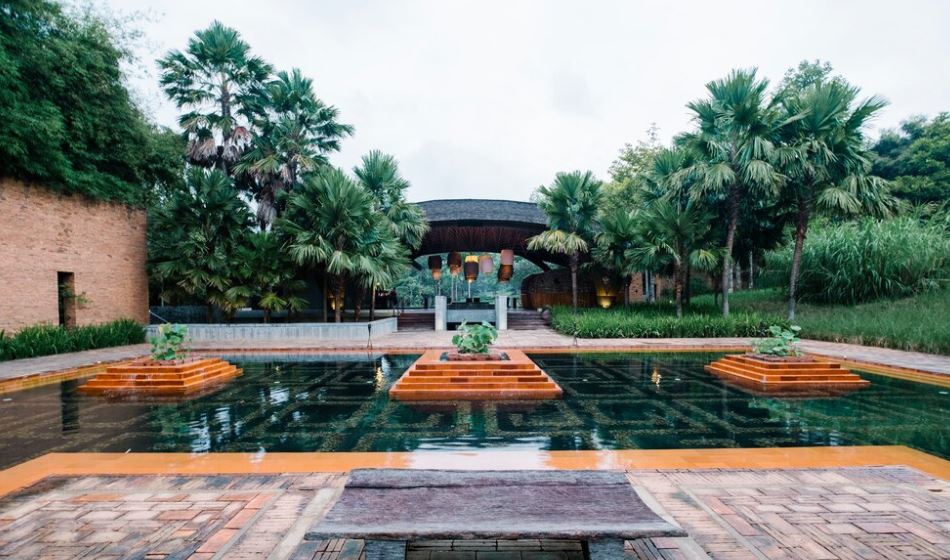In the past, landscaping was frequently neglected and consisted of a patchy lawn, a few shrubs, and possibly a mulch border. However, as more people have looked to their homes for refuge in recent years, backyard landscape design has become a potent means of redefining both space and lifestyle.
Making a lovely and useful backyard is now a need rather than a luxury in the modern home, where the distinction between indoor and outdoor living has become more hazy. These designs, which range from fire pit lounges and sculpted hedges to structured patios and edible gardens, are influencing how we live, rest, and re-establish our connection to nature.
🏡 Backyard Landscape Design Snapshot (Insert into WordPress)
| Category | Details |
|---|---|
| Focus | Designing intentional outdoor living environments |
| Popular Features | Fire pits, pergolas, native gardens, gravel paths, outdoor kitchens |
| Design Styles | Modern minimalist, Mediterranean, rustic, cottagecore, desert chic |
| Trend Drivers (2025) | Wellness, sustainability, increased time at home, resale value |
| Entry-Level Budget | Starting from $5,000 for basic enhancements |
| Premium Projects | $30,000–$75,000+ for comprehensive transformations |
| Key Benefits | Boosts home value, supports mental health, encourages eco-conscious living |
| Tools Used | Drone mapping, 3D design software, landscape design apps |
| Maintenance Needs | Based on planting zones and material choices |
Why You Should Give Your Backyard the Same Consideration as Your Kitchen
Imagine your backyard as an outdoor extension of your living room. Homeowners can design incredibly adaptable spaces that represent how they unwind, congregate, and develop by employing deliberate zoning techniques. This method is incredibly useful for creating separate spaces for play, eating, gardening, or peaceful contemplation in both big and small yards.
A family might, for instance, construct a lavender-lined, shaded gravel pathway that leads to an elevated herb bed. Beside it? A dining area with a pergola and solar lanterns, encircled by plants that attract pollinators. Every choice adds layers of personality and usefulness, from the stone’s texture to the flowers’ aroma.
Intentional design makes even small areas feel roomy. According to one Austin homeowner, “it felt like we’d tripled our square footage once we layered in zones—a hammock nook, a fire pit lounge, and some raised veggie beds.”
Style and Sustainability Come Together: Smarter Decisions, Greener Gardens
Backyard designs have changed over the last ten years from being purely decorative to being ecologically conscious. By utilizing native plants, permeable surfaces, and drip irrigation systems that are both aesthetically pleasing and environmentally responsible, designers today are fusing ethics with aesthetics.
The need for maintenance is greatly decreased by using native species. In addition to supporting local pollinators and thriving naturally, these plants frequently do not require chemical fertilizers or excessive watering. In areas that are experiencing water scarcity or drought, this can be especially helpful.
Hardscaping materials have also significantly improved during this time. Low-voltage lighting, recycled pavers, and wood from sustainable sources now provide beauty without sacrificing quality. Homeowners can design outdoor areas that are both forward-thinking and firmly anchored in the surrounding environment by combining these components.
Designing for Well-Being: The Intersection of Wellness and Nature
Wellness has recently emerged as a design principle, and the outdoors is no exception. Backyard landscapes are being designed for therapeutic purposes as well as aesthetic purposes. In addition to providing atmosphere, water features, herb gardens, and warm fire pits also promote tranquility.
These days, landscape architects are creating mindful gardens—areas intended to inspire, soothe, and revitalize—by incorporating ideas from Scandinavian and Japanese design. Textured surfaces, fragrant plants, and soundscapes all contribute to eliciting favorable emotional reactions.
Homeowners are effectively creating outdoor wellness studios without a monthly subscription by carefully arranging these components. And that was particularly effective during the pandemic. “Our garden became our sanctuary,” as one landscape client put it. Our sanity was literally saved by it.
Create a Design That Develops With You
Technology, climate change, and the growing desire for areas that nourish the body and the soul will all have an impact on backyard landscape design in the years to come. Whether you’re growing fruit trees or using bamboo to frame a yoga platform, your yard can become a significant extension of your identity.
Even the most basic areas can be transformed with careful planting and careful planning. Ultimately, landscape design is about more than just gravel and grass. It’s about creating something worth returning home to, grounded in soil and sunlight, and telling stories.

